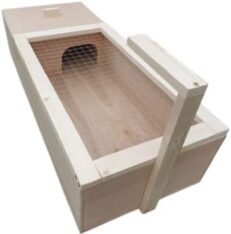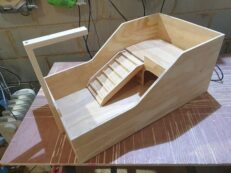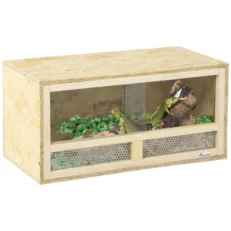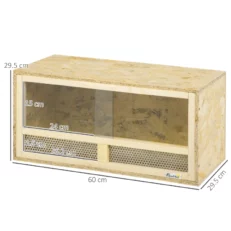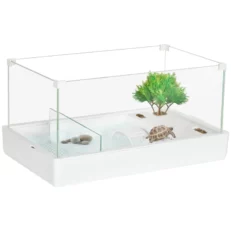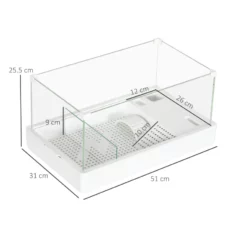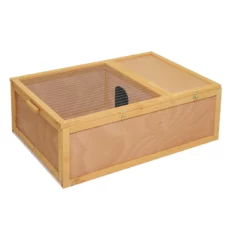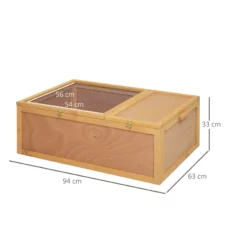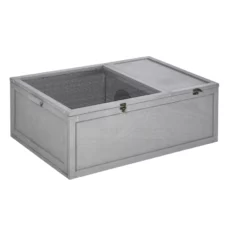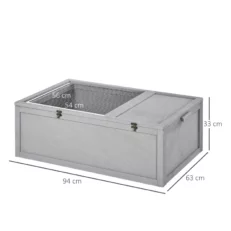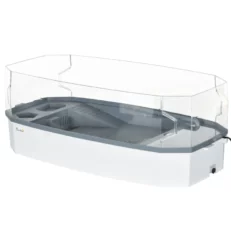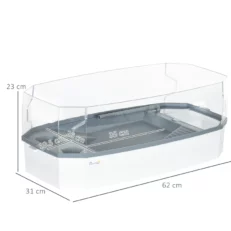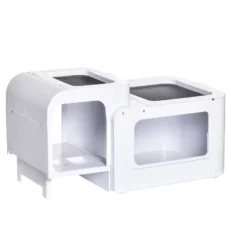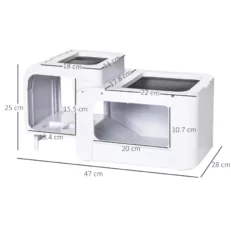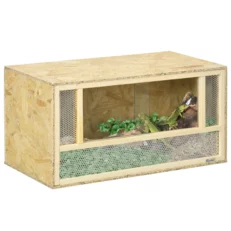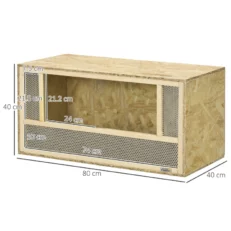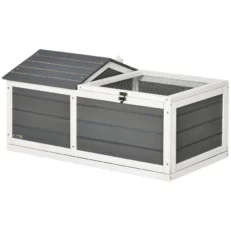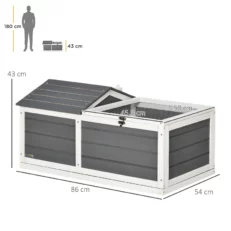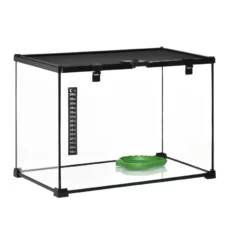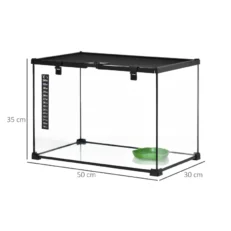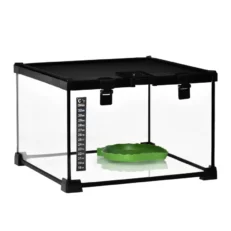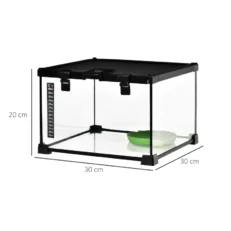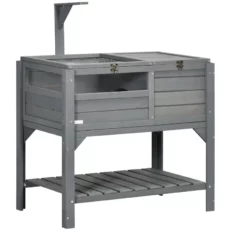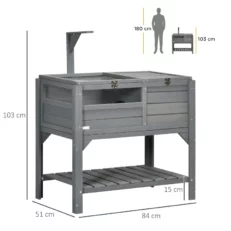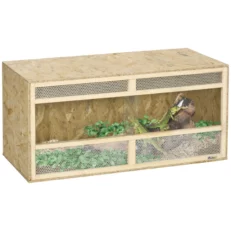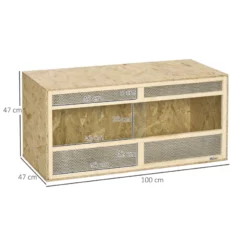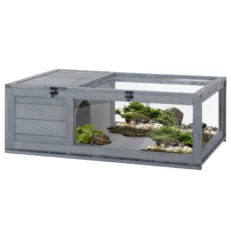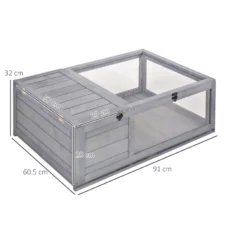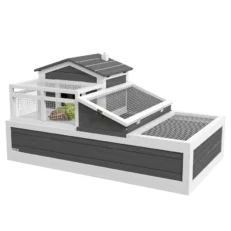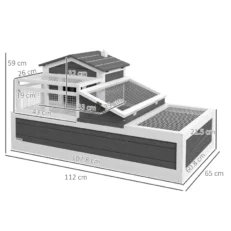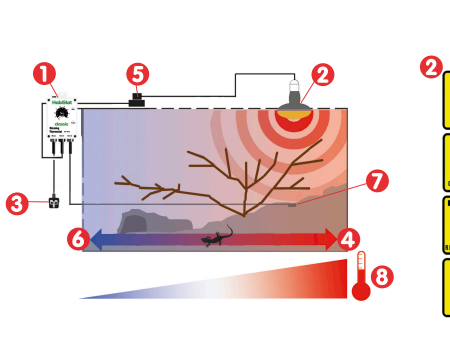
Reptiles, with their astounding diversity of species, have endeared themselves to many as beloved pets. However, caring for these fascinating creatures comes with the responsibility of understanding their specific needs, and among the most crucial factors for their well-being is temperature control.
Proper temperature regulation is of paramount importance for reptiles, as it goes beyond mere comfort; it is integral to their physiology and plays a central role in their overall health and vitality. Unlike warm-blooded animals, reptiles are ectothermic, or cold-blooded, meaning they lack the ability to internally regulate their body temperature. Instead, they rely entirely on external heat sources to sustain their metabolic processes and overall health.
The significance of temperature control for reptiles cannot be overstated. It directly influences their metabolic rate, and when temperatures fall below their optimal range, their metabolic processes slow down, resulting in reduced activity levels and compromised digestion. Prolonged exposure to inadequate warmth can lead to severe health issues. Furthermore, reptiles require warmth for efficient digestion, and without the appropriate temperature, they may struggle to break down and absorb nutrients from their food, ultimately leading to malnutrition and weight loss.
The impact of temperature extends to the activity levels of reptiles. They are most active when their body temperature falls within their preferred range. Maintaining an optimal temperature not only supports their natural behaviors but also significantly contributes to their mental and physical well-being. Additionally, temperature plays a critical role in the reproductive success of many reptile species, with some even having the sex of their offspring determined by incubation temperature.
Moreover, proper temperature control influences the immune function of reptiles. Those with access to suitable temperature ranges are more likely to have robust immune systems, while inadequate warmth can weaken their defenses against diseases and infections. The cumulative effect of temperature regulation is evident in the overall health and longevity of reptiles. When provided with the right thermal environment, they are more likely to thrive and lead fulfilling lives.
In conclusion, maintaining the correct temperature for reptiles is not merely a matter of creature comfort; it is a fundamental element of their survival and prosperity. Understanding the unique heat requirements of various reptile species and ensuring they are provided with the appropriate thermal environment are essential aspects of responsible and compassionate reptile care.
Understanding Reptile Species and Their Heat Needs
Reptiles, with their remarkable diversity, encompass a wide array of species, each occupying its unique ecological niche and having distinct heat requirements. Recognizing this diversity is essential for reptile enthusiasts and caregivers as it highlights the significant variations in the heat needs of these creatures.
Reptiles represent a vast group of cold-blooded animals, spanning continents, habitats, and lifestyles. Some thrive in scorching desert environments, while others find their homes in humid rainforests. This extensive diversity in their natural habitats results in a broad spectrum of heat requirements among reptile species.
Taking a closer look at popular reptile species commonly kept as pets reveals their specific temperature needs. For instance, snakes exhibit varying thermal preferences depending on their species. Ball pythons thrive in enclosures with a warm side (approximately 88-92°F or 31-33°C) and a cooler side (around 78-80°F or 25-27°C), while corn snakes prefer a slightly cooler environment.
Lizards, including bearded dragons, require a basking spot with temperatures ranging from 95-100°F (35-38°C) during the day, with nighttime temperatures dropping to the mid-70s°F (around 24°C). Other species of lizards may have slightly different basking temperature requirements.
Turtles, both aquatic and semi-aquatic, have distinct heat needs. Red-eared sliders, for example, necessitate a basking area with temperatures around 90-95°F (32-35°C) to aid in digestion and thermoregulation. Tortoises, on the other hand, have diverse heat requirements depending on their species. The Russian tortoise thrives in a basking spot of approximately 90-95°F (32-35°C), while the sulcata tortoise requires a much hotter environment.
Chameleons are known for their precise thermal requirements. Different chameleon species have specific temperature needs, but generally, they require a basking spot around 85-95°F (29-35°C) and a cooler zone. Green iguanas, as arboreal reptiles, need a basking temperature of around 90-95°F (32-35°C) with a cooler area in their enclosure.
Understanding these distinct temperature needs is paramount for the well-being of pet reptiles. It enables caregivers to create a suitable thermal environment that replicates their natural habitats, promoting healthy behavior, digestion, and overall vitality.
In essence, the diverse world of reptiles underscores the importance of tailoring heat requirements to the unique biology and natural habitat of each species. Ensuring that your pet reptile’s temperature needs are met is a fundamental aspect of responsible reptile care.
How Temperature Affects Reptiles
Temperature is not merely a comfort factor for reptiles; it is intricately linked to their physiology and well-being. Understanding how temperature affects reptile metabolism, digestion, behavior, and overall health is essential for providing appropriate care.
The physiological impact of temperature on reptiles is profound. Metabolism is tightly linked to temperature, and when it’s too low, a reptile’s metabolism slows down, leading to reduced energy levels, affecting activity, growth, and overall health. Inadequate warmth can even result in lethargy and a weakened immune system.
Digestion is another critical aspect influenced by temperature. Reptiles rely on external heat sources to digest their food efficiently. When temperatures are too cool, their digestive processes become sluggish, leading to incomplete digestion and potential health problems like bloating, constipation, or malnutrition.
Reptiles are ectothermic, meaning they depend on the surrounding temperature to regulate their body temperature. When it’s too cold, they become lethargic, less active, and may even stop eating. Conversely, when it’s too hot, they may become stressed and seek refuge from the heat.
Temperature has a significant impact on reptile reproduction. In some species, the sex of offspring is determined by the temperature at which eggs are incubated, making precise temperature control crucial for breeding programs.
Additionally, proper temperature and humidity are essential for successful shedding, as inadequate conditions can lead to retained shed and potential complications.
Recognizing the signs of temperature-related stress in reptiles is crucial for timely intervention. These signs include lethargy, appetite changes, digestive issues, behavioral changes, respiratory problems, skin issues, and excessive seeking of heat or shade.
In conclusion, temperature profoundly influences reptile physiology, behavior, and overall health. Providing the right thermal environment is essential for ensuring the well-being of pet reptiles. Caregivers should be vigilant in monitoring temperature-related stress signs and take prompt steps to rectify any temperature-related issues.
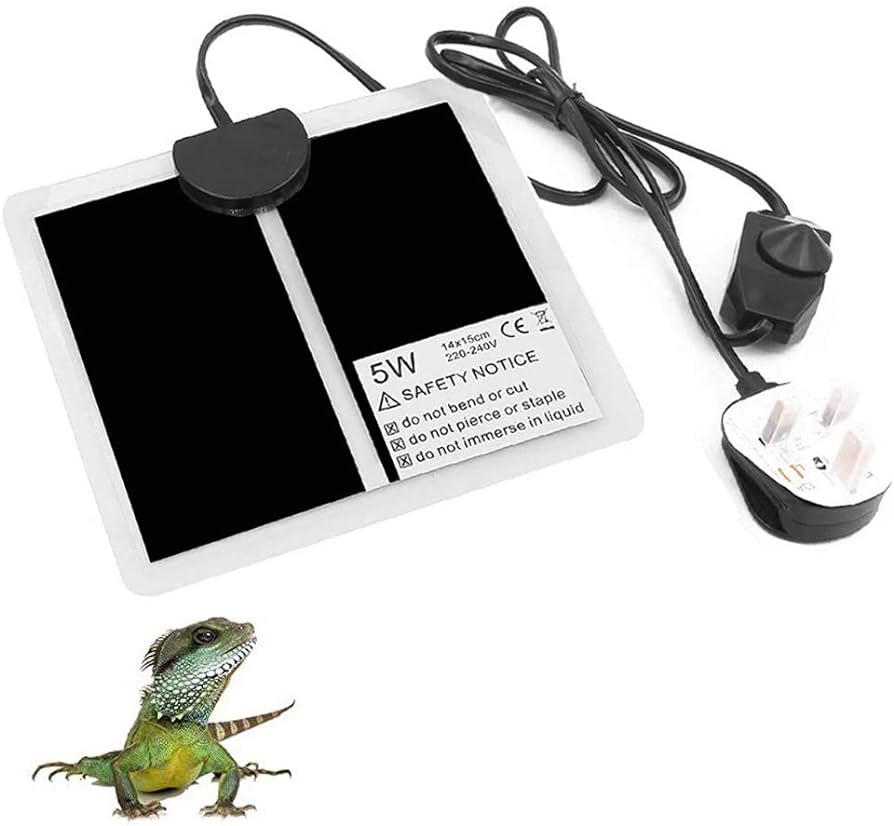
Top 3 Solutions for Temperature Control
Maintaining the optimal temperature for your pet reptile is essential for its well-being, and there are three primary methods for achieving this: heating lamps and pads, heat mats and cables, and thermostats and temperature controllers.
Heating lamps and pads are commonly used to create a thermal gradient within a reptile enclosure. Heating lamps, such as basking bulbs, emit both heat and light, simulating the warmth of the sun. This allows reptiles to regulate their body temperature by moving closer to or farther away from the heat source as needed. Heat pads, on the other hand, are placed beneath a portion of the enclosure to provide warmth from below.
This combination of heating methods helps reptiles choose their preferred temperature zones and mimics their natural habitat.
Heat mats and cables are designed for under-tank heating. They are placed beneath the enclosure, directly under the substrate or tank bottom, to provide a consistent and gentle heat source. These devices are energy-efficient and offer uniform heating, reducing the risk of overheating or burns. Heat mats and cables are ideal for reptiles that rely on ground warmth, such as many snakes and tortoises. They ensure a stable and comfortable surface temperature for resting and digestion.
To achieve precise temperature control and ensure the safety of your pet reptile, thermostats and temperature controllers are essential. These devices work in conjunction with heating lamps, pads, mats, or cables to monitor and regulate the temperature within the enclosure. Thermostats allow you to set and maintain the exact temperature required for your reptile’s species.
They also serve as a fail-safe mechanism to prevent overheating, ensuring the reptile’s safety. Temperature controllers are vital for maintaining a stable thermal environment, even in situations where room temperatures fluctuate.
In summary, the choice of temperature control method depends on your reptile’s species, habitat, and specific heat requirements. A combination of heating lamps, pads, mats, cables, and thermostats can be used to create the ideal thermal environment for your pet reptile. This not only promotes its health and well-being but also ensures that your reptile can thermoregulate effectively and thrive in captivity.
Setting Up the Ideal Habitat
Creating an ideal habitat for your pet reptile is vital for its overall health and well-being, especially in terms of temperature control. The enclosure’s design plays a crucial role in providing the perfect thermal environment.
The size of the enclosure should match your reptile’s specific needs, providing ample space for thermoregulation, exploration, and natural behaviors. Choose an appropriate substrate that mimics the reptile’s natural habitat, such as aspen shavings or coconut coir. Ensure the enclosure has hiding spots at both warm and cool ends, offering security and retreat options.
For arboreal reptiles, include branches and climbing accessories to utilize vertical space. If your reptile requires UVB lighting for calcium metabolism, provide suitable UVB lighting fixtures within the enclosure.
A crucial aspect of habitat design is creating a temperature gradient that allows reptiles to thermoregulate effectively. This process enables reptiles to regulate their body temperature by moving between different temperature zones within their habitat.
Place the primary heat source, like a heating lamp or heat mat, at one end of the enclosure. This area should provide the highest temperature in the habitat and serve as the basking spot. Ensure that the warm end’s temperature aligns with the specific requirements of your reptile species, consulting care sheets or experts for precise guidelines.
The opposite end of the enclosure should be cooler, creating a temperature gradient. This cooler area allows the reptile to retreat when it needs to lower its body temperature. It’s also where the water dish should be placed, as reptiles may use it for temperature regulation.
A temperature gradient within the enclosure offers several advantages. It allows reptiles to regulate their body temperature as needed, supporting optimal digestion, activity, and overall health. This setup mimics their natural environment, where they can move between sunny and shaded areas to maintain their preferred body temperature. Providing both warm and cool zones enables reptiles to exhibit natural behaviors, like basking or seeking shelter, enhancing their mental and physical well-being.
In summary, the careful design and setup of your pet reptile’s habitat, particularly in terms of temperature zones, are critical for their health and happiness. Always research the specific temperature requirements of your reptile species and seek guidance from experts or veterinarians if you have any questions or concerns about their habitat.
How do you control reptile temperature?
- Thermostat Control: Use a thermostat to maintain consistent temperature. The thermostat should be connected to the heating device to automatically adjust the temperature as needed.
- Temperature Gradient: Create a temperature gradient in the enclosure, with a warmer basking area at one end and a cooler area at the other, allowing the reptile to move between different temperatures.
- Regular Monitoring: Regularly check the temperature using reliable thermometers placed at both ends of the enclosure.
What are three different ways to heat a reptile cage?
- Under Tank Heaters: These provide bottom heat and are great for ground-dwelling reptiles.
- Basking Lamps: Incandescent lamps or special basking bulbs provide a heat source from above, simulating the sun.
- Ceramic Heat Emitters: These emit infrared heat without producing light, suitable for maintaining night-time temperatures.
How do reptiles regulate their body temperature?
- Behavioral Thermoregulation: Reptiles regulate their body temperature behaviorally by moving between warmer and cooler areas within their environment to raise or lower their body temperature as needed.
- Basking: Many reptiles bask in the sun or under a heat lamp to increase their body temperature.
- Sheltering: They seek shade, burrows, or water to cool down when they get too hot.
What is the best heat source for reptiles?
- Depends on the Species: The best heat source varies depending on the species and their natural habitat. Desert reptiles may benefit more from basking lamps, while forest dwellers might require a combination of under tank heaters and ceramic heat emitters.
- No Single Best Option: Often, a combination of heating elements is used to create an appropriate thermal environment. It’s important to research the specific temperature requirements for your reptile species.
Common Mistakes and How to Avoid Them
Ensuring the proper temperature in your reptile’s enclosure is crucial, but there are common mistakes that reptile keepers should be aware of and know how to avoid:
Extreme temperatures in the enclosure can be detrimental to your reptile’s health. Overheating can lead to heat stress, dehydration, and even death, while underheating can result in reduced metabolism, improper digestion, and a weakened immune system.
Research the specific temperature requirements for your reptile species and create an appropriate temperature gradient. Invest in quality heating equipment and thermostats to maintain precise temperature control. Regularly monitor the temperatures in the enclosure and adjust heating sources as needed.
Proper placement of heating sources within the enclosure is critical for creating a suitable temperature gradient. Incorrect placement can lead to uneven heating, making it difficult for your reptile to thermoregulate effectively.
Position heating lamps, mats, or cables at one end of the enclosure to create a warm basking spot. Ensure there is a cooler area at the opposite end to allow for temperature variation. Use temperature gradients to mimic the reptile’s natural behavior of moving between warm and cool zones.
Reptile enclosures require consistent temperature monitoring to ensure that the thermal environment remains within the desired range. Neglecting temperature checks can lead to unnoticed fluctuations that may harm your reptile.
Invest in reliable thermometers and hygrometers to measure temperature and humidity levels accurately. Establish a routine for temperature checks, especially during seasonal changes. Use thermostats and temperature controllers to maintain stability and safety.
By avoiding these common mistakes and maintaining a close eye on temperature control, you can create an environment that supports your reptile’s health, well-being, and natural behaviors. Remember that each reptile species may have specific temperature needs, so always consult species-specific care guidelines for the best results.
Conclusion
Proper temperature control is an essential aspect of responsible reptile care, and it has a direct impact on various aspects of a reptile’s well-being. Due to their ectothermic nature, reptiles rely on external heat sources to regulate their body temperature. This means that maintaining the right temperature in their enclosure is not just about comfort; it’s a matter of survival and overall health.
One key point to remember is that temperature significantly influences reptile physiology and behavior. When the temperature is too low, reptiles become lethargic, their metabolic processes slow down, and their immune system weakens.
On the other hand, excessively high temperatures can lead to heat stress, dehydration, and other health issues. Recognizing signs of temperature-related stress in your reptile is crucial for ensuring its well-being.
Creating a suitable thermal environment in the reptile’s enclosure involves several best practices. First and foremost, it’s essential to research the specific temperature requirements of your reptile species. Reputable care sheets and expert sources can provide valuable guidance in this regard.
Additionally, investing in high-quality heating equipment, such as heating lamps, mats, cables, and thermostats, is crucial for maintaining precise temperature control.
A key element in creating the right habitat for your reptile is the establishment of a temperature gradient within the enclosure. This means providing a warm basking spot at one end and a cooler area at the other. This allows your reptile to thermoregulate effectively, mimicking its natural behavior in the wild. Proper substrate selection, regular temperature monitoring, strategic placement of heat sources, and consideration of UVB lighting (if needed) are all part of ensuring a well-balanced thermal environment.
Furthermore, the use of thermostats and temperature controllers is indispensable for maintaining temperature stability and preventing overheating. These devices offer precise control and an added layer of safety.
Additionally, providing hiding spots at both warm and cool ends of the enclosure allows your reptile to feel secure and exhibit natural behaviors.
In conclusion, responsible reptile care involves meticulous temperature control, which affects the overall health and well-being of your pet. By following these best practices, you can create a comfortable and healthy environment for your reptile, enabling it to thrive and express its natural behaviors.
Remember that each reptile species may have specific temperature needs, so always consult species-specific care guidelines for the best results.

